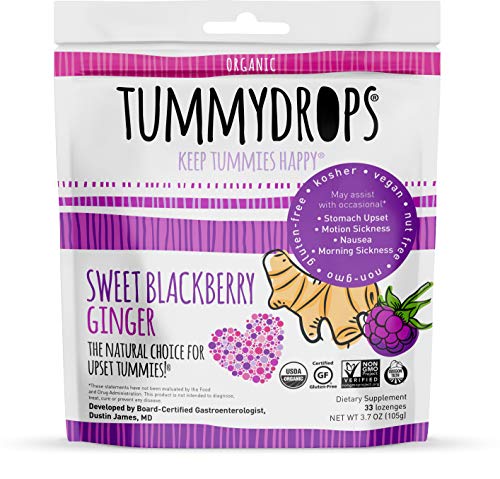Understanding the Complexities of Cyclic Vomiting Syndrome
Cyclic vomiting syndrome (CVS), or cyclical vomiting syndrome, is characterized by recurrent episodes of intense nausea and vomiting that can last hours to days. It is more common in children than adults, and the estimated prevalence is 1.9% to 2.3%. It is important to note that the number of people living with CVS may be higher than the prevalence as many times patients are misdiagnosed.
Exploring Potential Triggers: The Factors Behind CVS Episodes
Unfortunately, the cause of CVS is not known, but some think there could be a link to migraines. Per the NHS, there may be nothing that generates an episode of CVS in some people, but in others, the following events may be triggers:
- Emotional stress, whether it be good or bad. For example, excitement, anxiety, or panic attacks
- Physical stress. For example, infections, exhaustion, or lack of sleep
- Some foods or drinks, like chocolate, cheese, caffeine, alcohol, or MSG (monosodium glutamate)
- Extreme temperatures - very hot or cold weather
- Menstrual cycles
- Allergies
- Motion sickness
- Fasting (not eating for an extended period), overeating, or eating right before going to sleep
Navigating the Phases of Cyclic Vomiting Syndrome: Prodromal, Vomiting, and Recovery
- Prodromal phase - During this phase, you may feel an event of vomiting is about to start. You may have intense sweating and nausea or even appear pale.
- Vomiting phase - During this phase, you may experience nausea, vomiting, and retching (making the sound and movement of vomiting without the vomiting). Some people may vomit up to 5-6 times an hour for up to 10 days. During this phase, you may also have stomach pain, be unable to talk or move, have diarrhea, a slightly elevated temperature, dizziness, headache, feel sleepy, drool, spit up a lot of saliva, or have a sensitivity to light.
- Recovery phase - During this phase, nausea, vomiting, and retching will stop, and your other symptoms will improve. Complete recovery may take a few hours to a few days.
Some people also add in phase four, which is the well phase. During this time, you do not have CVS symptoms.
Identifying Trigger Foods: Dietary Modifications for Symptom Management
Identifying triggering foods for some people may be a challenge. Because it can be challenging, I encourage you to keep a log. A log will help you find trends in foods, moods, etc, that may help identify what is triggering your episodes of CVS. One good one to keep in mind is called mySymptoms Food Diary. This app is a diary for tracking food, bowel health, stress, sleep, mood, medications, and symptoms.
Once you know your triggers, it may be easier to help keep CVS episodes at bay or to a minimum.
Maintaining Fluid Balance: Hydration Strategies During and Between Episodes
During an episode, staying in bed and sleeping in a dark, quiet room is recommended. Once the vomiting is over, it’s necessary to drink fluids with electrolytes - like Gatorade, Powerade, Body Armor, and coconut water. You may even want to start by diluting your electrolyte drink with water in a 1:1 ratio.
When not experiencing active CVS episodes, the average adult should drink between 9 and 13 cups of water daily. Please keep in mind that individuals with certain health conditions may need less.
Promoting Wellness: Lifestyle Changes for Physical Activity and Stress Management
Navigating the fast-paced rhythm of modern life can pose challenges when managing stress – a sentiment many of us can relate to. The Centers for Disease Control and Prevention (CDC) offers valuable insights into effective stress coping mechanisms. Taking breaks from consuming news, for instance, can be beneficial in alleviating anxiety induced by the barrage of negative information. Additionally, prioritizing self-care is crucial. This involves adopting healthy lifestyle habits such as maintaining a balanced diet, engaging in regular exercise, and ensuring adequate sleep each night.
According to CDC recommendations, adults should aim for at least 150 minutes of moderate-intensity physical activity per week, including strength training exercises on at least two days. The National Institutes of Health suggest a minimum of 7 hours of sleep nightly for optimal health. Moreover, emphasizing good nutrition is essential for fueling the body and supporting mental well-being. Incorporating a diverse range of colorful fruits and vegetables, lean proteins, and healthy fats into one's diet can provide the necessary nutrients to help prevent mood disorders such as anxiety and depression. Adopting these holistic approaches to self-care can contribute to better stress management and overall well-being in today's bustling world.
Another thing that can be done to help with stress management is to increase your vagal tone. Check out this article if you don’t know about your vagus nerve. More and more is coming out about vagal tone and our stress response. If our vagal tone is low, we are likely very easily to get worked up by a stressor. If our vagal tone is high, we are more likely not to get triggered by a stressor. The University of Ottawa gives these tips for increasing your vagal tone:
- Cold exposure - anyone heard of the cold plunge?
- Deep and slow breathing
- Singing, gargling, humming
- Meditation
- Socializing and laughing
Seeking Professional Guidance: Collaborative Approaches to CVS Management
If you find yourself having multiple episodes of vomiting, it’s always a good idea to get guidance from your healthcare professional to rule out more serious causes. Once you have been diagnosed with CVS, you may be prescribed various medications like anti-nausea medications, acid-reducing medications, or even medications to treat migraines. For most people, the more they experience episodes, the more likely they are to find a regimen that works best for them.
Embracing Hope: Navigating CVS with Resilience and Support
Living with Cyclic Vomiting Syndrome (CVS) presents its challenges, but it's important to approach each day with resilience and optimism. By understanding the complexities of CVS and implementing the management strategies discussed, individuals can confidently navigate this condition's ups and downs. Remember, seeking support from healthcare professionals, embracing lifestyle changes, and prioritizing nutrition are key components of managing CVS effectively. With the right tools and mindset, leading a fulfilling life and finding moments of joy and comfort amidst the challenges is possible. For more information, check out the Cyclical Vomiting Syndrome Association UK to find support for those living with CVS.
- Davis, A., & Bryant, J. H. (2023). Cyclic Vomiting Syndrome. In StatPearls. StatPearls Publishing.
- NHS. (2023, August 10). Cyclical Vomiting Syndrome. NHS choices.
- Centers for Disease Control and Prevention. (2021, November 30). Tips for coping with stress|publications|violence prevention|injury Center|CDC. Centers for Disease Control and Prevention.
- Fallis, J. (2017, January 21). How to stimulate your vagus nerve for Better Mental Health.




















Comments
Join The Conversation...